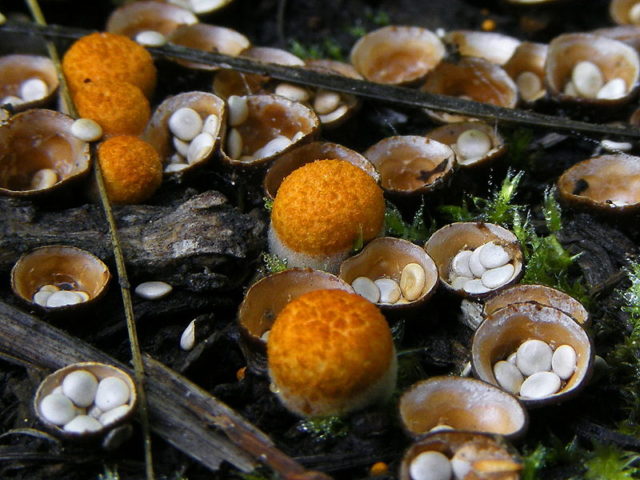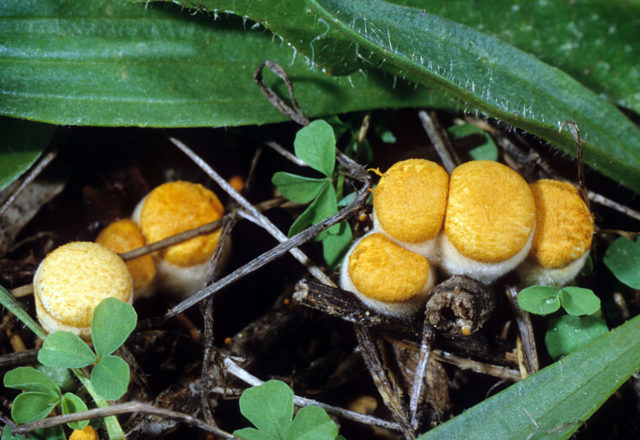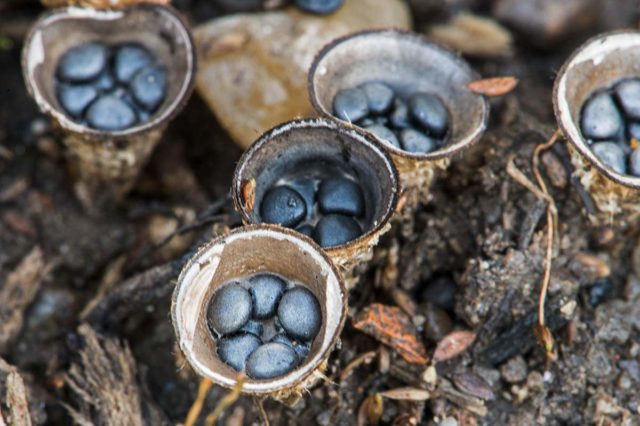Content
The smooth glass (Crucibulum laeve), also called the smooth crucibulum, belongs to the Champignon family and the Crucibulum genus. First described by the British botanist, Fellow of the Royal Society, William Hudson in the 18th century.
Where the smooth glass grows
The cosmopolitan mushroom is ubiquitous. Being a saprotroph, the smooth glass is involved in the process of processing wood remains into nutritious humus. It grows on dead wood, tree stumps, fallen trunks and branches buried in the soil. Can take a fancy to old, crumbling into dust, wooden structures - benches, beams, fences, logs, walls of sheds and houses. Also found in gardens, parks, old clearings and fields. Lives both on conifers and deciduous species - spruce, pine, cedar, birch, oak.
The period of active growth begins in July and lasts until October-November, and longer in the southern regions, until stable frosts. It grows in large colonies, often fruit bodies are closely pressed against each other, forming a continuous carpet. Does not occur singly. Fruit bodies devoid of spore-containing peridiols tolerate winter well and survive until spring.

The original fruiting bodies look like miniature nests with eggs or a scattering of sweets in a paper cup
What a smooth glass looks like
The smooth glass has a very interesting appearance that differs at different stages of fruiting. Only the bodies that have appeared look like small growths of club-like, ovoid or barrel-shaped, covered with white long hair with separate reddish scales. Above there is a kind of rounded-toroidal membrane - "cover", also felt-fluffy. It changes its color from cream-white and beige to egg-yellow, orange, ocher or brownish shades.
As it develops, the sides darken to sandy, reddish, amber, honey or brownish brown. The upper membrane ruptures, leaving the goblet fruiting body open. The inner surface of the fungus is grayish-white, brown, yellowish-sandy, smooth. The pulp is rubbery, dense, light chestnut or reddish in color. It has a height of 0.3 to 1.1 cm, a diameter of 0.2 to 0.7 cm.
White, gray, or slightly yellowish spore storages are lenticular or toroidal in shape, ranging in size from 1 to 2 mm. They are covered with a strong wax shell, and in the lower part they have an adhesive thread, which reliably sticks the flown "pill" to grass, bushes, animals and people. So the smooth glass "moves" to a new habitat. Usually, the number of spore storages in one "glass" is from 10 to 15 pieces.

In the colony, fruiting bodies can be seen at various stages of development.
Is it possible to eat a smooth glass
There is no exact data on the chemical composition of a smooth glass in the public domain, therefore it is recognized as an inedible species. Whether it is toxic is unknown. Due to its tiny size and parchment-thin pulp, it is not of interest to mushroom pickers and has an extremely low culinary value.

The smooth glass has a rather unusual appearance.
Similar twins
The smooth glass at the time of appearance can be confused with representatives of its own species.
- Manure crucibulum. Inedible. Usually lives on heaps of humus, manure. Rarely found on wood as well; it is distinguished by a darker color of the inner surface and ash-black, with a shiny sheen, the color of the peridioles
Differs in a darker color of the inner surface and ash-black, with a shiny tint, color of the peridioles
- Olla's Crucibulum. Inedible. Differs in silver-blue color of spore carriers.
Inside the tiny glasses are mother-of-pearl "buttons"
Conclusion
Smooth glass - a mushroom from the genus Bokalchikov, is a typical representative of this interesting species. Inedible. Grows everywhere on decaying wood, deadwood, forest floor and branches. Occurs in coniferous, deciduous and mixed forests, meadows, fields. The mycelium begins its development in July and grows until frost. Old fruiting bodies survive well until the next season. Grows in large, close-knit groups. The angle of inclination of the walls of the "glass" is ideally designed for active spraying of the contents.










